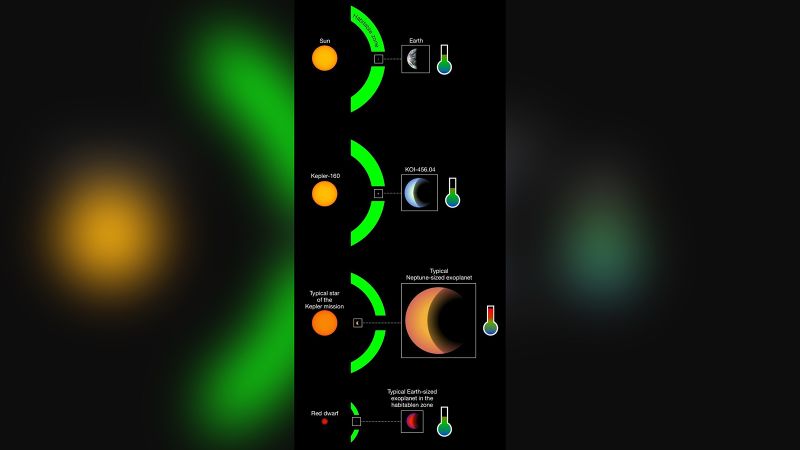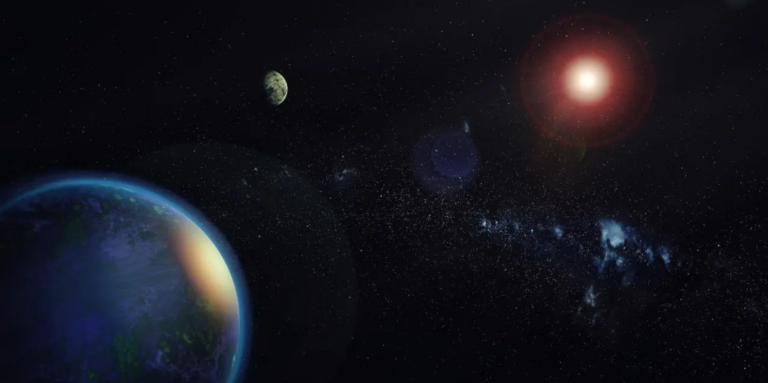A planet similar to Earth orbiting a star similar to the sun was found by astronomers at a distance of 3,000 light years.
According to experts, a planet with the same size as Earth moves around the sun-like star that whose light reaches our eye in 3,000 years home is 3,000 light years from our planet.
The star, which is named Kepler-160, was found among the Kepler exoplanet-hunting mission data, which was done by NASA to research planets from outside of the solar system between 2009 and 2013. It is the same in size and temperature of the sun as our legendary star.
These exoplanets are believed to be circling their parent star Kepler-160, as it is the first scientific study of the past six years to confirm their existence. Instead, these planets are barren and inhospitable since they’re likely orbiting their stars quite closely and because they’re insanely giant compared to Earth.
The fact that the time it took Kepler-160c to circle the star varied by a lot did determine that there could be a third planet around. Instead of the asteroid theory creationists came up with another hypothesis. The astronomers discovered these planets during their observations.
In a statement, the lead study author, René Heller, a scientist at The Max Planck Institute for Solar System Research, implied that our analysis indicates that the los angle planet is in fact, orbited not just by two but by the total number of four planets.
The astronomers’ results, described in Astronomy & Astrophysics, show signs of a new phenomenon.
Kepler-160c is due for its perturbation, the third planet Kepler-16b. Further fascinating is that the crew has discovered another planet in addition to the one they know.

The candidate is referred to as Kepler Object of Interest 456, which is shortened to KOI-456. 04. Its star, which is red dwarf and its counterpart sun like, gives it the light of a similar type and magnitude, although it is known to be the size with less than double that of Earth.
Besides that, the proximity to the star also means that the exoplanet has already entered the habitable zone, where its surface temperature could, potentially, allow for the presence of liquid water and the possibility of life. As it orbits, its distance to the galactic center is similar to that of the Earth’s orbit around the sun.
The astronauts would circle the sun in 378 days, as this period is similar to how long it takes for an Earthling to complete one orbit around the sun.
KOI-456, among several other planets thought to possibly be habitable, is shown to be less suitable to host life than many. 01 is comparatively large. Nevertheless, the super-Earth is the notable among the exoplanets that are known to be orbiting in the solar-type parent star and the exoplanet just less than twice the Earth size is confirmed, Heller says.
The planet´s surface may posses a background like Earth if it is behaving in the sameme way when interacting with its host star but it may also depend on whether it has an atmosphere or not. The researcher group reported that planet could exert a temperature like global average temperature of Earth understanding that the atmosphere volume is stable and greenhouse effect is moderate.
Finding exoplanets
Using carefully a model of stars brightness distinctions, which showed how far these plants were from the star, the researchers compared them to the Kepler data and found the two additional possible planets in the Kepler -160 system. This scientific team has been able to accomplish that by going through the 9 years’ worth of Kepler’s wide-spectrum data. They have already discovered a total of 18 exoplanets in first batch.
“It behooves us to observe that this signal is barely noticeable in the jumble of data because it is extremely fragile. ”Of the primary ones our newest search mask is very competent in finding out an actual exoplanet signal from the noise in the tests that Heller had been leading.
Even though the researches are open to the possibility of it being an error in measurements, they are not sure about this claim and said that they need not to be certain if it is a planet or not yet. Their data however suffers from this low precision label since it shows the chance of being a planet as 85% while the required precision label is higher with a minimum of 99%.
Nevertheless, upcoming observations of this system would be final confirmation, whether it’s a planet or not, by the means of ground or space based telescopes. In addition, ESA’s PLATO mission will discover exoplanets the same size as Earth that are closer to a small distant sun and it is forecasted to start in 2026.
Not only is the number of Earth-sized Stars dwindling, but in the recent past exoplanets were found on small red dwarf stars as well. As the traveled orbits of these planets are nearer to those stars than our Earth to the Sun – which of course is much larger and smaller than our Sun, and hence the relatively high surface temperatures of these planets, are more likely to be similar.
The light detectors are not able to see them or perceive them but they do emit infrared radiation. They are also likely to rain catastrophic flares and radiation storms on their planets that make the life on them controversial. It is why them too are considered as possible home for Alien races.
“Rather than just the planet, the way the star looks is also a major part of the bigger picture of habitability” interviewer.
Do not forget to share your opinion with us to provide you with the best posts !




0 Comments